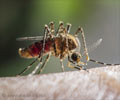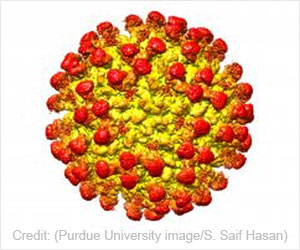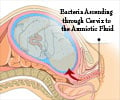A new mechanism identified by researchers explains how Zika virus can pass from mothers to their children during pregnancy.

‘The agent tizoxanide inhibits Zika virus in maternal decidual cells grown in the lab, offering promise for preventing perinatal transmission that can cause devastating malformations and brain damage in developing fetuses and infants.’





The findings appeared Dec. 1, 2020 in the Journal of Immunology. The study was led by co-principal investigators Ozlem Guzeloglu-Kayisli, PhD, a USF Health associate professor of obstetrics and gynecology, and Charles J. Lockwood, MD, USF Health senior vice president, dean of the Morsani College of Medicine, and a professor of obstetrics and gynecology specializing in maternal-fetal medicine.
"If we can better understand Zika virus vertical transmission and successfully block infection in maternal (decidual) cells early in the pregnancy, the virus will not pass through the placenta to reach the fetus and it is less likely to cause severe abnormalities," said Guzeloglu-Kayisli, the paper's lead author.
The widespread global alarm caused by the spread of mosquito-borne Zika virus throughout the Americas in 2015-2016 dissipated after the virus all but disappeared in 2017. Yet, resurgence remains possible in areas where the Aedes aegypti mosquito is prevalent, and there is no treatment or vaccine available for Zika virus infection.
While most Zika-infected adults show no symptoms, the virus can cause minor flu-like symptoms, and in rare cases has been associated with Guillain-Barre syndrome.
Advertisement
Zika has also been linked to pregnancy complications, including preterm birth, preeclampsia and miscarriage. Moreover, timing appears important. Mothers infected in the first trimester are much more likely to have babies with severe Zika birth defects than mothers infected in the third semester.
Advertisement
A subtype of fetally-derived placental cells known as syncytiotrophoblasts, in direct contact with maternal blood, are assumed to be the site where the Zika virus enters the placenta, leading to potential fetal infection. However, Dr. Ozlem Guzeloglu-Kayisli said, these particular trophoblasts resist Zika virus attachment and replication.
To learn more about how Zika gets through the placental wall, the USF Health team began by investigating the cellular and molecular mediators of Zika virus replication. Among their key findings, the researchers:
- Showed that specialized uterine cells from both pregnant and nonpregnant women were highly infectable by Zika virus. These immunologically active decidual cells, which line the uterus in preparation for and during pregnancy, form the maternal part of the placenta closest to the fetus.
- Identified a more than 10,000-fold higher expression of the Zika virus attachment-entry receptor in the maternal decidual cells than in the fetal trophoblasts.
Once inside the maternal cells, the Zika virus (an RNA virus) hijacks the cellular machinery to make proteins needed to copy its genetic material and churn out new viral particles.
The proliferation of viral particles released from the maternal cells are then transmitted through branch-like vascular projections (villi) on the placenta's surface layer where they can infect fetal trophoblast cells otherwise resistant to Zika virus.
- Found that the efficiency of viral replication was significantly greater in first-trimester decidual cells than in those from term pregnancies.
- Concluded that maternal (decidual) cells likely serve as the source for initial Zika virus infection and enhance subsequent transmission through the placenta to the fetus.
"Moreover, trimester-dependent responses of decidual cells to Zika virus help to explain why pregnant women are susceptible to Zika infection and why the subsequent effects are more detrimental in the first trimester than in late pregnancy," the study authors wrote.
- Demonstrated that tizoxanide, the active metabolite of FDA-approved antiparasitic drug nitazoxanide, effectively impeded Zika virus infection in both maternal decidual cells and fetal trophoblast cells.
The drug has been shown preclinically to inhibit a broad range of flu-like viruses and is being tested clinically against coronavirus. The finding warrants further testing of tizoxanide to block perinatal transmission of Zika virus and thereby protect the fetus from harmful outcomes, the researchers conclude.
Source-Eurekalert















